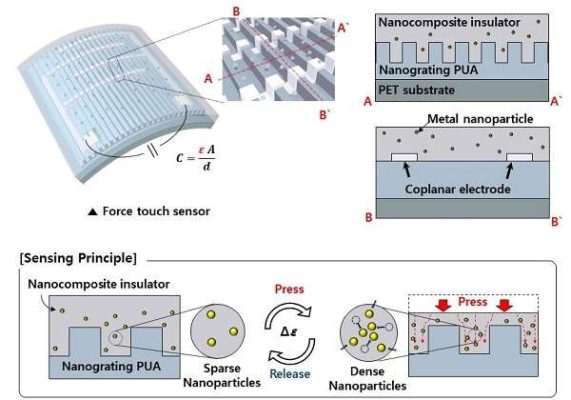Touchscreen News
Researchers Develop Bendable Transparent Touch Sensors
Touchscreen technology is evolving at an ever-increasing pace, paving the way for innovative new solutions that will one day become the “norm.” Among the latest innovations in the industry is the development of a new bendable transparent touch sensor.
Developed by researchers at the University of British Columbia (UBC), the new touchscreen sensor revolves around the use of a conductive gel that’s embedded between two layers of silicone. The gel is capable of detecting the location of touches, as well as various touch-based commands like swipping and tapping. According to a statement by the UBC, it can even perform these operations when stretched, folded or otherwise bent.
Assuming this information is correct, the UBC’s new touchscreen sensor could be a game-changer. Can you imagine using a touchscreen interface that was capable of bending or folding? It may sound like a science-fiction novelty concept, but researchers are busy working to make it a reality.
When discussing the new touchscreen sensor, UBC student and researcher Mirza Saquib Sarwar explained that there are sensors capable of detecting pressure, much like the iPhone’s 3D Touch. The team’s newly designed sensor, however, functions in a different manner by featuring a stretchable and foldable material.
“There are sensors that can detect pressure, such as the iPhone’s 3D Touch, and some that can detect a hovering finger, like Samsung’s AirView. There are also sensors that are foldable, transparent and stretchable,” said researcher Mirza Saquib Sarwar, a Ph.D. student in electrical and computer engineering at UBC. “Our contribution is a device that combines all those functions in one compact package.”
In terms of size, the research team’s prototype is incredibly small, measuring just 5 cm x 5 cm. It also uses readily available, inexpensive material, such as gel and silicone. The team hopes this will drive down the production costs of the sensors so it can one day be marketed to the public.
In addition to being used for commercial touchscreen products, the team also says its new sensor could be used for robotic skins to make human-machine interactions safer. Machines are typically kept separate in the workplace due to the increased risk of injury to human workers, explained UBC professor John Madden. According to Madden, though, enabling a robot to detect the presence of a human could alter the way in which it interacts with humans; thus, reducing the risk of injury.

